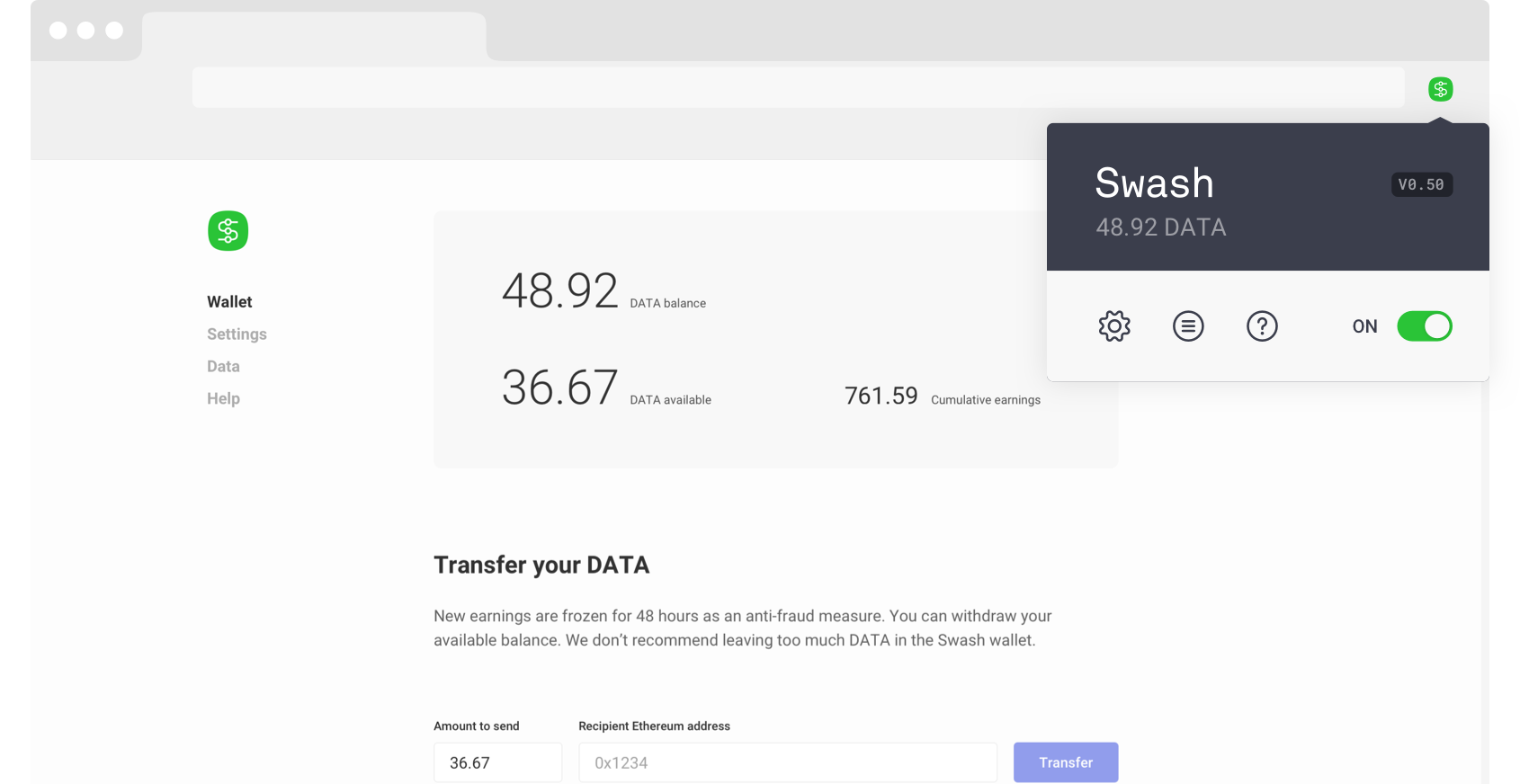Swash
Projects | | Links: Official Website

Swash powers Shopify storefronts with nocode store blocks on auto-pilot. Power up with one-click 📈sale+stock automations, convert better with 🛍️product guides & how-to’s, and deliver real-time price & 🛒bestseller updates with badges.
Overview
Swash enables internet users, developers, and businesses to cultivate new realities of data ownership and value creation through new incentivisation streams, innovative data monetisation mechanisms, and a collaborative development framework, governed by the ethos of Web 3.While we browse the internet every day, our data is being captured and monetized without our benefit or consent. It can be complicated to understand what data is being used for what purpose, and the road for the average person browsing the web to take back control has been unclear.
- The business model of Internet 2.0 was free products, paid for by capturing user behaviour and personal data, often in ways users did not expect. Streamr’s addition to the Web 3 model allows for the creation of Data Unions — ad hoc collectives of users pooling their data to in order to increase its value and then selling subscriptions to it.
- Our team has built the first of these, a browser extension called Swash, that was first introduced at Mozfest in London in late 2019. Swash allows users to capture their browsing data, gives them tools to hide anything sensitive, and then send it in real-time to Streamr Network.
- Behind the scenes, the Streamr stack works with the xDai sidechain to enable potentially hundreds of thousands of data providers to withdraw payments for their data from the single Ethereum smart contract that powers each Data Union. This was a world first, the first digital data union ever created.
An easy to use pub/sub network, world-class UI/UX, and a transparent and highly skilled team.

Purpose and Need
- People lack ownership over their data and don’t receive any value from it, businesses pay for expensive, low-quality data that lacks consent, and developers struggle to build due to lack of access to high-quality data.
- We live in a world governed by data. A transparent, secure, and collaborative ecosystem that incentivises everyone - without compromising on security and innovation - is urgently needed.
- Swash’s decentralised data ecosystem redefines how data is collected and valued by providing a simple way to passively earn, innovate, and create for a fairer world and better, more equitable internet.

Here’s how it works:
- Data Ownership: Swash users have complete control over their data. They can choose to share specific data points or opt-out entirely. This means users can decide what data is valuable and what remains private.
- Data Monetization: Users earn Swash Tokens (SWT) by selling their data to businesses and researchers. This creates a win-win situation where users are compensated for their data while companies gain access to high-quality, consent-based data.
- Data Privacy: Swash is designed with robust privacy safeguards. All data transactions are encrypted and anonymized, ensuring user anonymity and data security. The platform complies with strict GDPR and privacy regulations.
- Data Utility: Swash encourages data-driven research and development. Researchers and organizations can access valuable datasets for various purposes, such as market analysis, trend forecasting, and scientific research.

Why Swash Matters
Swash addresses several key issues related to data ownership, privacy, and the data economy:- Empowering Individuals: Swash puts the power back into the hands of users. It allows individuals to make informed decisions about their data and benefit financially from it.
- Data Privacy: Swash’s emphasis on data privacy ensures that users have full control over their information. With end-to-end encryption and anonymization, users can trust their data is handled with the utmost care.
- Fair Compensation: Swash rewards users for their data, creating a fair compensation model that ensures users are not exploited for their valuable information.
- Ethical Data Collection: Swash promotes ethical data collection practices, enabling companies to access data in a way that respects user consent and privacy.
- Data for Good: The platform opens up opportunities for research and social good, allowing organizations to access user data for purposes that benefit society.

Related Posts
- EU Gets Serious About Data, Cites Web3 Browser Extension Swash
- Mapping the landscape of data intermediaries
- Swash Earn Goes Live!
- How to: Donate your $SWASH via Data for Good
- How to: Earn more with Swash Ads
The Benefits of a Tokenized Data Union
- A data union is a framework that allows people to band together and reclaim the value of their information. By rewarding users through the $SWASH token, they are not only paid as they browse the web, but also will see their earnings increase in value as the network grows and the token appreciates over time. This type of network effect is enabled by Web 3 tokenization, and is what Swash had in mind when they decided to focus on their ideological mission of monetizing user data at their outset, rather than first trying to grow the marketplace. By rewarding the community for its growth, the structure of the union becomes truly for the people, by the people.
- Though there are existing Web 2 services that allow users to approve their data sales and profit from them, Swash’s passive income structure facilitates easy onboarding of the average consumer. The Swash extension can be installed into multiple browsers with the same account, providing seamless benefits across all of a user’s internet activity. As Swash grows its data union to encompass a wide range of users and builders, revolutionary dApps will continuously be created that connect data creators and buyers in productive ways. By creating a transparent bond between all sides of the data purchasing equation, Swash aims to become the leader in selling data that is relevant and valuable. As the company achieves its goals, the value of the $SWASH token subsequently rises, providing larger rewards to its holders.
- Under the Swash model, users install a browser extension for their chosen browser — Chrome, Firefox, Brave and Edge so far. Setup involves deciding which sites to never record data for, and how much data you’re comfortable with sharing. Then turn Swash on and browse as normal. The data is streamed to a Data Union where it is available for purchase. Revenue is distributed equally and members can choose when to withdraw funds to their own wallets. As a Data Union Admin, Swash takes a small percentage of all sales.
Next Steps for Swash
- Having first proven the concept of allowing users to monetize their data in a decentralized manner, Swash set out to grow the community and provide additional use cases for the protocol. 2021 was a huge year for Swash as they became the world’s largest data union, proving the success of their mission-based approach. They held a successful IDO of the $SWASH token at the end of October, subsequently expanding their team.
- Understanding the importance of interoperability, Swash has prioritized creating new integrations that allow the protocol to work with additional blockchains, and partnered with collaborators to provide additional flexibility and utility. They have also integrated burn mechanisms into Sash that will reward the community and facilitate tokenomic sustainability as they launch the Swash DAO, which will give holders a voice in decisions related to the company and token.
- Moving forward, Swash plans to launch a suite of services to enable builders to innovate on their protocol, including sCompute, sChannel, and sApps. Having laid a strong foundation as the leaders in this new, revolutionary field of decentralized data collection, these next iterations will serve to expand their reach and provide the possibility of a true partnership between data creators and buyers. As consumers become more aware of the economics behind their internet usage, Swash provides a powerful way for us to reclaim our power, bringing new users into the open metaverse in the process.
